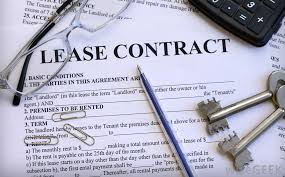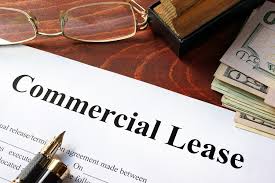
Property Management
Agreements
Arizona does not define property management in statute.
“Property management firm” is defined in ARS 32-2171, along with its companion, “rental
agreement”:
1. "Property management firm" means any corporation, partnership or limited liability company licensed pursuant to section 32-2125, subsection A or a designated
broker that by written agreement, manages rental property or properties for compensation.
2. "Rental agreement" means a lease or leasing agreement.
Throughout the years, different industry entities have attempted to define property management as a stand-alone phrase; but, because
property management covers so many subsets of management, the Legislature and the industry choose to keep the definition broad, and the courts defer to the definition
of property management firm.

Agreements
Put it in writing
Property management agreements are of a general agency nature. Most have clause components stating that the property manager will act for
the owner. One example is the following:
Owner shall approve all expenditures in excess of $ for any one item, including repairs to be paid by deductions from
tenant’s deposits, except that no Owner approval shall be required for recurring operating expenses or emergency repairs if in the sole discretion of the Broker such repairs are
necessary to protect the Property from damage or to maintain services to the tenant as required by the lease(s).
The property management agreement may also allow the property manager to solely be in charge of choosing the tenant.
These are examples of the property manager doing more general duties versus a listing agent doing specific, simple duties that don’t require acting for the client. Listing agents
do very limited duties, such as marketing the property in order to find a buyer. If the marketing provides a buyer for the property, the seller pays the listing broker a
commission.
Property management agreements are of a general nature. Listing and buyer broker agreements are of a specific nature. Figure 26.4 shows a sample Property Management
Agreement.
Through ARS 32-2171, all real estate property management agreements are regulated
by what must be in an agreement and what may be in an agreement.

Agreements must have the following:
1. Be
in clear and unambiguous language
2. State
all material terms and conditions
3. Be
signed by the property owner or his agent and the property management firm's designated broker or the broker's authorized real estate licensee
4. Specify
a beginning and ending date
5. Specify
the compensation terms to PM
6. Note
no assignment to another PM without express written permission of the owner
7. Contain
cancellation provision agreeable to both parties
8. State
disposition of all monies collected by PM including security deposits
9. Specify
type and frequency of status reports
10. Describe amount and purpose of operating monies held by PM
11. State who gets the interest monies

Agreements may have the following:
- • Contain
an automatic renewal provision so long as PM sends notice at least 30 days in advance of renewal
- • Provide
reasonable liquidation damages or cancellation fees for early termination
- • Authorize a licensed or unlicensed employee of the brokerage to put monies into or be a signatory on the property management trust account
- • Require
more than one signature on checks of trust account
AAR: Property Management Agreement

Trust Accounts
Other people’s money
ARS 32-2174 regulates the way a property manager handles monies of a property
management client. We refer to these monies as “other people’s monies.” They must be held in trust, and they must be accounted for to the penny.
The bank account must be designated by one of these terms:
• "Trust
account”
• "Fiduciary
account”
• "In
trust for (individual or entity name)”
• "Trustee
for (individual or entity name)”
• "Fiduciary
for (individual or entity name)”
Other requirements or provisions of the statute are as follows:
• All
owner’s monies must be kept in the broker’s trust account or in the owner’s bank account.
• Accounts
may be interest-bearing; interest must be designated to either the broker or the owner.
• The
designated broker may delegate a licensed or unlicensed person to make deposits and withdrawals, or be a signatory on the account. If an unlicensed person, the person must be in
the direct employ of the broker, a W-2 employee. The unlicensed person can also be an officer or member of the property management firm.
• The
broker may require two signatures on checks or may use a stamp (facsimile).
• Monies
received that are undisputed must be deposited within 3 business days.
• Rental
agreements must indicate where the tenant deposits are being held.
ARS 32-2175 regulates records, audits, and requirements. Property managers are held
to high standards for their records, accounting procedures, and ability to keep accurate records. Below are specifics of this statute:
1. Keep residential
leases and documentation for one year
2. Keep
records of finder's fees for three years
3. Keep
financial records for three years
4. Only
the property manager, broker, or a delegated real estate licensee with written authorization may sign nonresidential lease agreements. Sales associates may sign residential lease
agreements. Fully executed residential lease agreements are not required to be reviewed and initialed.
5. Consecutively
number all PMAs in an orderly manner, easily accessible by the Department
6. Nonresidential
lease agreements must be filed chronologically and contain confirmation of deposits and monies handled as per instructions of parties, a complete copy of the lease, and contain a
copy of the listing if there is one
7. Onsite
PMs must number transaction folders by unit number (apartments) or system easily accessible by ADRE
8. Be
prepared to furnish material documents to ADRE upon request
ARS 32-2176 is particularly specific to apartments and their
tenants:
• Pay
a finder credit to an unlicensed person who is a tenant
• Residential
leasing manager may receive a bonus
• Pay
a finder fee to an unlicensed person who is a tenant
• A
tenant may receive multiple finder fees pursuant to this section up to five times in any 12-month period
• A
tenant who looks for potential tenants “shall not do any of the following:
• Show
a residential dwelling unit to a prospective lessee.
• Discuss
terms or conditions of leasing a dwelling unit with a prospective lessee.
• Participate
in the negotiation of the leasing of a dwelling unit.”
• Advertise.
Note: Licensees
who pay a finder’s fee in violation of the statute may have their licenses suspended or revoked, as well as be liable for a civil penalty.
ARS 32-2173 also gives direction to the
property management firm as to what to do at the termination of the agreement. The PM shall provide the owner:
- 1. All
originals or other copies of all rental agreements or related documents in the property management firm's possession for current and previous tenants. These documents shall
include any applications, property inventories, leases, pet permits, default notices, lease amendments or addenda in the property management firm's
possession. The broker is not required to keep copies of residential rental lease agreements or related rental lease documents after
termination of the property management agreement.
- 2. All building plans, environmental studies, conditions, covenants and restrictions, inspection reports, contracts, keys, warranties, personal property or other
documents in the possession of the property management firm.

Final Accounting at Termination
At the termination, cancellation, or expiration of the agreement, the property
management firm shall provide the owner with a final accounting of the property's financial status that includes at least the following:
• All
tenant securities (within 5 days of the end of the agreement)
• Reimbursement
for all monies in accounts (within 35 days)
• Final
accounts receivable and payable lists (within 75 days)
• A
final bank reconciliation (within 75 days)

Lease Agreements
There are certain requirements for all lease agreements under the Arizona Residential Landlord and Tenant
Act, as well as disclosure by the owner or the property manager:
• The
name of the property manager, if any
• Who
holds the security deposit
• Refundable
and nonrefundable fees
• Move-in
existing damages to rental property
• Right
to be at the move-out inspection
• If
other than a single-family home, bedbug educational information
• If
applicable, lead-based paint documentation
A landlord’s duty to disclose material latent defects to the tenant is more ongoing than disclosure to a buyer in a sales
transaction.
Example: Just because the landlord discloses that
the furnace is about 20 years old and sometimes does not ignite right away, it does not relieve him of liability if there is a dangerous gas leak or from keeping the property
inhabitable.
AAR Lease Agreement

How Commercial Leases Differ From Residential Leases
It's crucial to understand from the get-go that, practically and legally speaking, commercial leases and residential leases are
quite different. Here are the main distinctions between them:
Fewer consumer protection laws. Commercial leases are not subject to most consumer protection laws that govern residential
leases -- for example, there are no caps on security deposits or rules protecting a tenant's privacy.
No standard forms. Many commercial leases are not based on a standard form or agreement; each commercial lease is customized to
the landlord's needs. As a result, you need to carefully examine every commercial lease agreement offered to you.
Long-term and binding. You cannot easily break or change a commercial lease. It is a legally binding contract, and a good deal
of money is usually at stake.
Negotiability and flexibility. Commercial leases are generally subject to much more negotiation between the business owners and
the landlord, since businesses often need special features in their spaces, and landlords are often eager for tenants and willing to extend special offers. (For information on
negotiating the terms of your lease, see Commercial Leases: Negotiate the Best Terms.)
Commercial leases are not governed by the ARLTA (Arizona Real Estate Landlord Tenant Act). They are governed for the most
part by contract law.
Arizona law provides that
when a commercial tenant fails to pay rent for five days or breaches any material lease terms, the landlord may reenter and take possession or, without formal demand or reentry,
commence an action for recovery of possession of the premises.
Commercial buildings, landlords and tenants, must be compliant with ADA.
Commercial lease
.
A commercial lease pertains to a lease (or rental) of property designed solely for the sale of goods, services or manufacture of
product. Premises subject to a commercial lease are not units designed for sleeping and day to day living of the tenant. The premises are typically warehouses, strip malls, office
spaces and industrial or commercial buildings. Price is typically based upon amount per square foot occupied by the tenant plus in some instances a percentage of the gross
received by the tenant.
.
The term of a commercial lease is typically for a set number of years where the tenant has an option to extend the lease near
the end of it for another set term or more.

Residential lease/agreements
.
A residential lease simply is a lease (or rental) of a property designed solely for use by a person, persons or a family to live
in on a day-to-day basis. Typical residential leases are for homes, townhouses, condominiums, and apartments. There is no commercial purpose (sale of goods, services, or
manufacture of product) with respect to a residential lease.
.
Price for the occupation of a residential rental is typically based upon a set amount per month varying in terms of a
month-to-month lease to a term of years
Types of Commercial Leases
Gross lease - With a gross lease for commercial space, the renter pays the landlord
a fixed monthly rent. It is then up to the landlord to pay the expenses of operating the building.
Net lease - A provision that requires the tenant to pay a portion or all of the
taxes, fees and maintenance costs for the property in addition to rent. There are three primary types of net leases: single (net), double (net-net) and triple
(net-net-net).
Percentage lease - In a lease with a percentage rent provision, the landlord will
receive a minimum amount of rent (called the annual fixed rent or annual minimum rent) and, in the event the tenant's gross sales increase over a certain amount (sometimes called
the "breakpoint"), the landlord will also receive a certain percentage of the gross sales over the breakpoint.
Sandwich lease - A sandwich lease involves a party sub-letting what is already
being sub-let. This type of leasing arrangement may come about if the primary party signs a long-term lease on a piece of property, but is either unable to use all the space or is
looking to vacate.
Useable Area: In commercial leasing, Usable Square Feet simply means the square
footage that is rented to be used exclusively by the tenant. Usable square feet includes private (tenant-only) rest rooms, closets, storage and any other areas used only by the
tenant.
Simply put, usable square footage means the square feet used directly by the tenant. It does not include common area square
footage which is used in calculating "rentable square feet."
Rentable Area: The measurements used in determining commercial space rents are
based on guidelines set by the Building Owners and Managers Association (BOMA) International and are considered industry standard throughout the United States.
Many commercial leases use BOMA Standards and charge monthly rent based on “Rentable Square Feet,” not on Usable Square Feet.”
This is important to understand because if you are quoted a price of $1.25 per usable square foot, that may be what you end up actually paying for each month.
Usable SF + a Percentage of the Common Areas of the Building (that is divided among all tenants based on the percent of usable
square feet each tenant occupies).
Load Factor: In a lease, the load factor is the multiplier to a tenant's useable
space that accounts for the tenant's proportionate share of the common area (restrooms, elevator lobby, mechanical rooms, etc.). The load factor is usually expressed as a
percentage and ranges from a low of 5% for a full tenant to as high as 15% for a multi-tenant floor.
Subtracting one (1) from the quotient of the rentable area divided by the useable area yields the Load Factor. The "loss factor"
is the total rentable are of the full floor less the useable area divided by the rentable area. (If a full floor broken up into multiple tenancies has a useable area of 18,000
sqft and rentable area of 20,000 sqft, the load factor is 11.1% and the loss factor is 10%. Loss factor is determined by dividing 18000 / 20000 = .9 rentable vs
.1.
Pass Through: An increase in operating expenses over the base year amount that is
billed to the tenant as additional rent.
Reappraisal/Revaluation: A Revaluation is the process of conducting the Data
Collection and Market Analysis necessary to equalize the values of all properties within a municipality for the purpose of a fair distribution of the tax burden.
Roof-Top Leasing: Rooftop leasing is often similar to cell tower leasing, however
there is usually much less space for the transmission equipment. Furthermore, while wireless carriers or third party cell tower companies often own the tower, rooftop owners can
lease space to multiple carriers and receive multiple income streams.
Subleases and Assignments: What’s the Difference?
Both subletting and assigning involve transferring your lease obligations to another tenant. But there are legal and practical
differences between subleases and assignments.
Sublease
If you transfer just part of your leased commercial space to another tenant while you remain on the property, on a temporary or
permanent basis, it’s called a sublease. If you transfer the entire rental to another tenant for a period of time while you move out, that too is a sublease. For
example:
· The warehouse space John rented was too large when his business slowed down.
He considered subletting one corner to another tenant for one year, hoping that after that, business would pick up and he’d need the space again. John’s partner was less
optimistic, and wanted to sublet the corner for the remaining time on the lease.
· Wendy’s retail space, devoted to winter sports gear, became a clothing and
gear shop for hikers during the summer, sublet by Paul, after Wendy packed away her inventory and stored it elsewhere.
Unless your lease prevents it, you may rent to anyone you like and charge any rent you choose. The person who subleases is
called a subtenant. In a subleasing arrangement, the subtenant pays rent to you and you continue to pay the landlord under the terms of your lease. If the subtenant fails to pay
the rent, you have the power to terminate the sublease, evict the subtenant, and retake the space, just as your landlord can do to you. And if the subtenant violates any of your
lease terms (such as erecting a sign in violation of the sign clause in your lease), your landlord has the right to terminate your lease.
When a sublet occurs, it is sometimes referred to as a Sandwich Lease because
the Lessee stays on the lease and as the responsible party, but the sublessee uses the rights and pays the rent to the lessor.
Assignment
By contrast, an assignment occurs when you transfer all your space to someone else (called an assignee) for the entire remaining
term of the lease. As with a sublet, you are free to choose your assignee and determine the rent unless your lease says otherwise. In an assignment, the new tenant pays rent
directly to the landlord. Importantly, since you’ve given away all of your interest in the lease, you have no rights to retake the property or to evict the assignee for nonpayment
of rent.
A landlord could have a "no sublet and no assignment" clause, but it is the exception rather than the rule in commercial
leases.
Leasehold as Collateral
When the land is only leased--for example, a commercial developer leasing property to build an office building or strip mall,
the developer can raise financing by using a leasehold mortgage, with the buildings, but not the land, as collateral.
Termination of the Lease
A commercial lease can be terminated before the lease term is over without liability only if there is a provision in the lease
that allows for the early termination of the lease. The most common avenues for early termination of the lease without liability are:
Break Clause: A break clause gives a tenant or a landlord an option to terminate a
lease at least once during the term of the lease. The break may be used by the landlord or the tenant only when the conditions of the break clause have been met. The right to
break may only occur as indicated in the lease, either on a certain fixed date(s) or at any time during the lease. There is no universal type of break clause and issues related to
the drafting, timing, beneficiaries, penalties, and frequency of use all vary depending on the terms of the break clause agreed upon in the lease.
Assignment: An assignment is a transfer of all interest in a leased property to
another party before the original lease expires. An assignment is only possible if allowed by the lease.
Breach of Lease Agreement: A lease may be terminated by either party when the other
party significantly violates the terms of the lease agreement.
Agreement: The landlord and the tenant can always agree to modify the length of the
term at any time during the lease.
Bankruptcy of the Lessee
If you are an Arizona commercial landlord, the automatic stay of the federal law bars you from locking the tenant out of
the property unless you get relief from the stay.
So what can you do when your tenant declares bankruptcy? There are basically two approaches; you can wait for the
bankruptcy case to resolve or you can seek relief from the bankruptcy stay. Asking the federal bankruptcy court for relief from the stay, or in the case of a business
Chapter 11 reorganization, getting adequate assurance from the trustee and the debtor (tenant) that the terms of the lease will be honored during the reorganization, is
usually the quickest way to resolve the issue.
Foreclosure of a Mortgage
The basic rule for commercial leases in foreclosure: "first in time, first in right." In other words, if the mortgage was
recorded before the lease was signed, the general rule is that the lease is wiped out. This allows the new owner of the property to do with it as they please -- typically sell it,
lease it to the current occupants or lease it to someone else. The new owner can evict the current tenant (even if the tenant has fully complied with their lease), but typically
must get court permission to do so.












